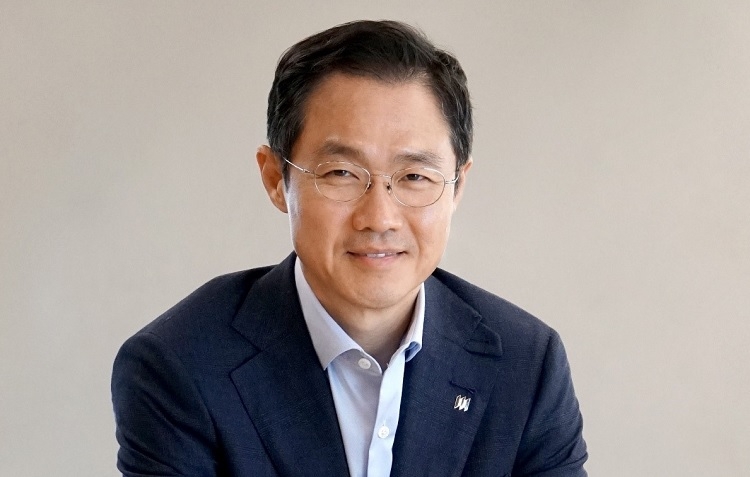Fast-growing, fast-aging Vietnam needs to close its retirement protection gap
 |
| Sang Lee, CEO of Manulife Vietnam |
As Asia’s fastest growing economy in 2020, with a youthful and highly dynamic population, remarkable poverty alleviation and huge potential for growth, Vietnam presents a rosy picture at present. Few would argue that Vietnam outperformed last year, creating investment opportunities, while also coping relatively well with the pandemic.
Yet, looking ahead, there’s no need for high-powered binoculars to see some huge challenges on the horizon. Vietnam’s population is ageing fast and, like many emerging economies in Asia, Vietnam faces a retirement protection gap. It highlights the need for Vietnamese to better understand the importance of financial planning.
That Vietnam is in good shape at present is not in doubt. Despite the pandemic, its gross national product grew 2.9 per cent in 2020, with the IMF forecasting it to grow a further 6.5 per cent in 2021. Moody’s Investors Service in March raised its outlook for Vietnam to positive from negative, while affirming its Ba3 rating. Moody’s said the country stood to benefit from global shifts in production, trade, and consumption after the pandemic.
Furthermore, the country’s demographics look good, with 55.5 per cent of the 96.5 million population under 35, and 75 per cent of the population of working age. There’s also a rapidly growing middle class that currently accounts for 13 per cent of the population and is expected to reach 26 per cent by 2026.
Retirement gap runs to billions, maybe trillions of dollars
Despite impressive growth, Vietnam is facing an ageing population – something other emerging countries in Asia are also needing to address. By 2055, there will only be 2.1 working age adults per older person. According to a 2019 report by the Vietnam National Committee on Ageing, close to one in five Vietnamese will be aged 60 and above by 2035.
| The Manulife Asia Care Survey findings demonstrate that in Vietnam there is a very strong appetite for investment products tailored to address people’s specific concerns. |
This will turn Vietnam into one of three ASEAN countries where the proportion of older persons in the population exceeds 20 per cent, joining the ranks of Singapore and Thailand. It means that an already huge retirement protection shortfall could worsen without a greater push by pension funds to get greater public buy-in and in-tandem support from government initiatives. The insurance industry, along with other public bodies and sectors, have a responsibility to help find solutions.
The retirement protection gap has grown amid a state pension scheme in its infancy and little penetration by private pensions. Just a small minority in the 60-80 aged group collect a state pension.
According to Swiss Re, Vietnam’s mortality gap amounts to an estimated $1.8 trillion, while the country’s health protection gap stood at around $36 billion in 2017 – both numbers will be higher now. It is estimated that Vietnam’s retirement protection gap is running into hundreds of billions, possibly trillions, of dollars.
The problem is compounded by the fact that over 56 per cent of total employment is informal in 2020, with many not covered by contributory pension schemes.
Traditional family support for elders is declining and, increasingly, people no longer expect to receive such support. What all this means is that without the necessary action, some 16.4 million elderly people – or 79 per cent of the 20.7 million elderly above the statutory retirement age in 2030 – risk ending up without a pension. Adding to the pressure, life expectancies are increasing too. By 2050, on average, men will live to 77.2 years and women to 83.2 years.
Age and healthcare costs go hand-in-hand – upwards
Just as people grow older, so do their healthcare needs and costs almost invariably increase. In Vietnam, during the past 20 years, healthcare costs have soared and show no signs of slowing. Between the years 2000 and 2017, annual healthcare costs per capita rose nearly 700 per cent in Vietnam, albeit from a very low starting point. In 2017, the annual healthcare cost per capita was $130, or 5.53 per cent of GDP, compared to $19 and 4.85 per cent in 2000.
Awareness of the retirement and healthcare challenges weigh on the growing middle class, which comprises mostly of Millennials. In Manulife’s Asia Care Survey, published in February, the findings showed that, in Vietnam, broader financial worries have spilled over onto people looking at what sort of nest egg they have for retirement, with 79 per cent saying that retirement planning has become more important to them since COVID-19 started.
With the rising cost of living and longer life expectancies, it’s Vietnam’s Millennials who are at risk of having to work to survive way into old age. However, there is a light at the end of the tunnel. Potentially, Vietnam can use this as an opportunity to learn from some of its more developed Asian neighbours. Many of these markets have successfully prepared for an ageing population, and Vietnam has a chance to course correct its future.
While the Vietnamese government is focusing on solving the macroeconomic problems, insurance organisations can be an effective line of defence against ageing risks by expanding the product range that gives people greater security and helps them finance a more comfortable lifestyle in the later years. This, in turn, makes it easier for individuals to become part of the solution by making it simpler for everyone to embrace financial freedom.
An all-in-one product to address Millennials’ needs
The Manulife Asia Care Survey findings demonstrate that in Vietnam there is a very strong appetite for investment products tailored to address people’s specific concerns.
In response to customer feedback, Manulife is stepping in to fill the gap with an all-in-one investment-linked product (ILP). There’s growing appetite for ILPs in Vietnam. ILPs combine individual investment strategies with the protection of an insurance policy under one plan. Their focus can vary, but typically they provide customers with an incentive to save in the long-term, especially for retirement purposes.
Manulife’s new ILP product, Mon Qua Tuong Lai (The Gift for Your Future), offers flexibility for those who are looking for a future retirement plan that addresses stable investment needs and health protection. It complements Vietnam’s social insurance pension benefits. For those who are entitled to it, social insurance provides a pension that is 45 per cent of the average monthly salary during the contribution period, increasing by 2 per cent a year and capped at 75 per cent. The maximum pay-out period is 20 years.
 |
| Manulife’s new ILP product, Mon Qua Tuong Lai (The Gift for Your Future) |
The product also comes with three new target-date investment funds that are designed to optimise investment portfolios, so that customers’ funds can be automatically allocated to build long-term financial plans based on a target milestone. This milestone comes when they retire and start withdrawing in either 2035, 2040, or 2045. Besides regular and special bonuses, the product provides death protection against unforeseen events and medical coverage for the whole family, an all-in-one product.
Usually, there’s a lot to consider when buying an insurance product. Which one is right for me? What type of coverage do I need? Which fund best suits my needs? The Manulife Vietnam’s professionally trained financial advisor team is ready to help, focusing on delivering needs-based advice and solutions. This is an important part of how the company gives our customers the confidence to make the right financial decisions.
Given a rising cost of living and higher lifestyle expectations, Mon Qua Tuong Lai can provides an important support to Millennials as they recognise the importance of retirement planning. It’s there to provide clear financial benefits, but also to ease various life and financial pressures, giving them the financial freedom to live every day better.
What the stars mean:
★ Poor ★ ★ Promising ★★★ Good ★★★★ Very good ★★★★★ Exceptional
Latest News
More News
- Non-life insurers face mounting pressure after typhoon hits motor sector (October 02, 2025 | 18:59)
- Prudential Vietnam delivers responsible investment package (September 25, 2025 | 10:37)
- Insurers struggle to keep pace with EV rapid adoption (August 29, 2025 | 17:12)
- Non-life insurance market in sees bright spots in H1 despite rising challenges (August 28, 2025 | 16:21)
- Life insurance rebounds with renewed growth and trust (August 06, 2025 | 18:04)
- Global Care launches Vietnam’s first insurance KOL platform (July 25, 2025 | 09:42)
- Liberty Insurance leaves mark at 2025 Insurance Asia Awards with dual wins (July 14, 2025 | 07:27)
- New CEO takes helm at Prudential Vietnam (July 07, 2025 | 17:51)
- Vietnam's insurance sector reaches turning point for global integration (June 24, 2025 | 09:00)
- Sun Life Vietnam increases charter capital to over $700 million (May 28, 2025 | 19:14)

 Tag:
Tag:





















 Mobile Version
Mobile Version